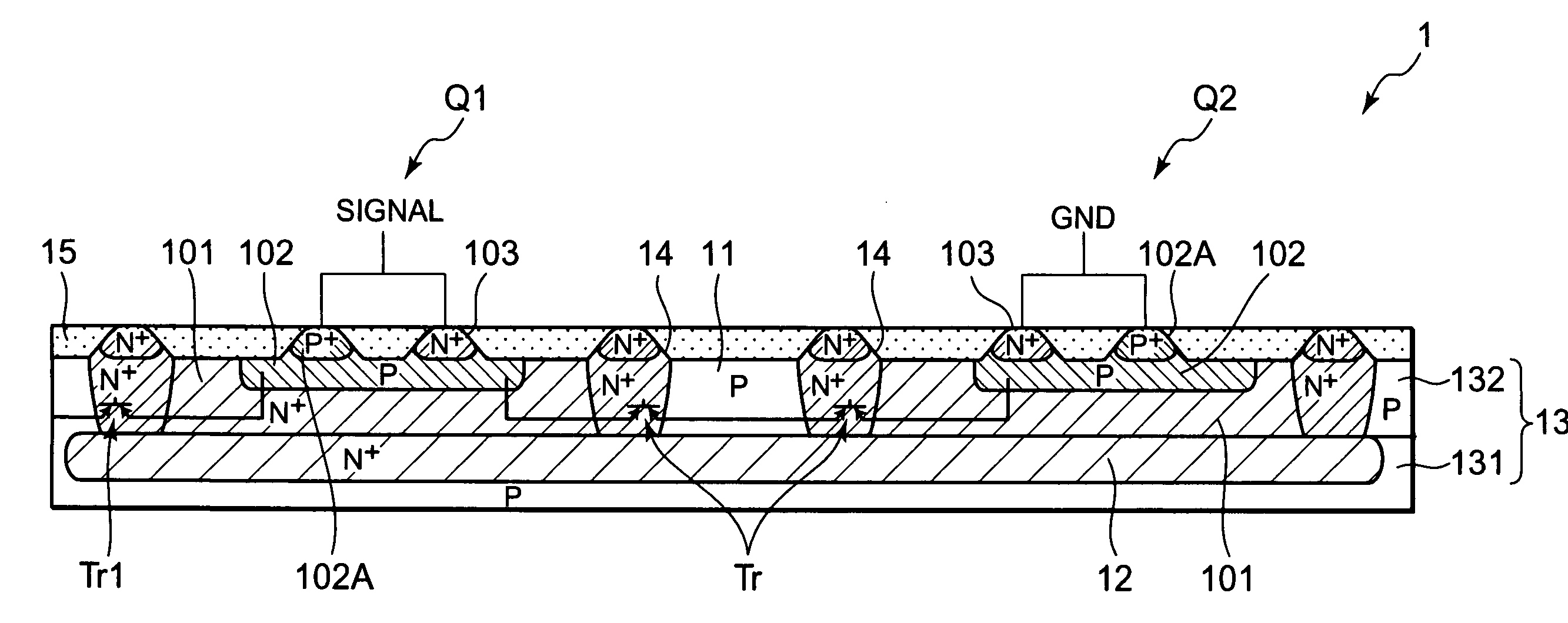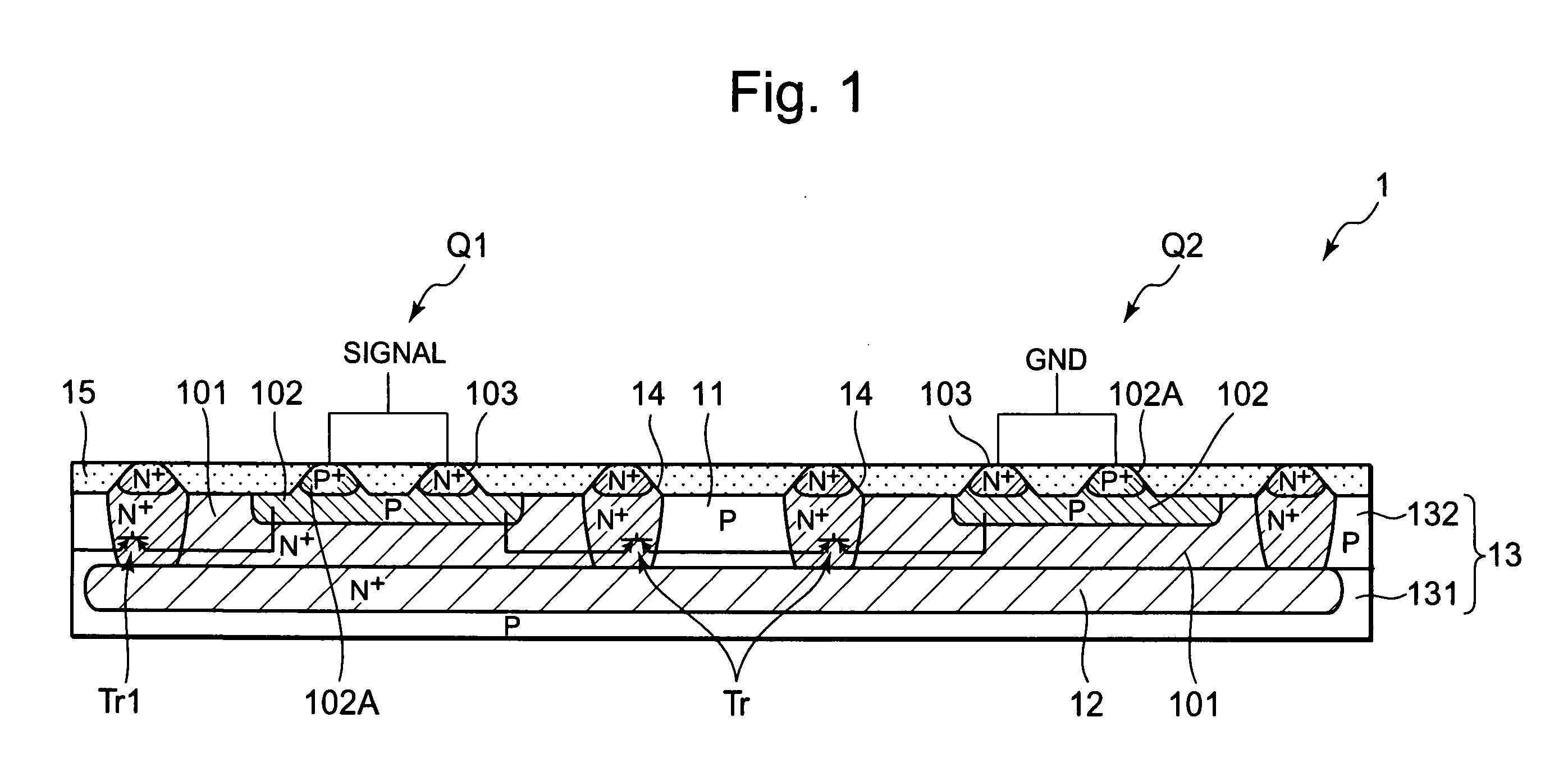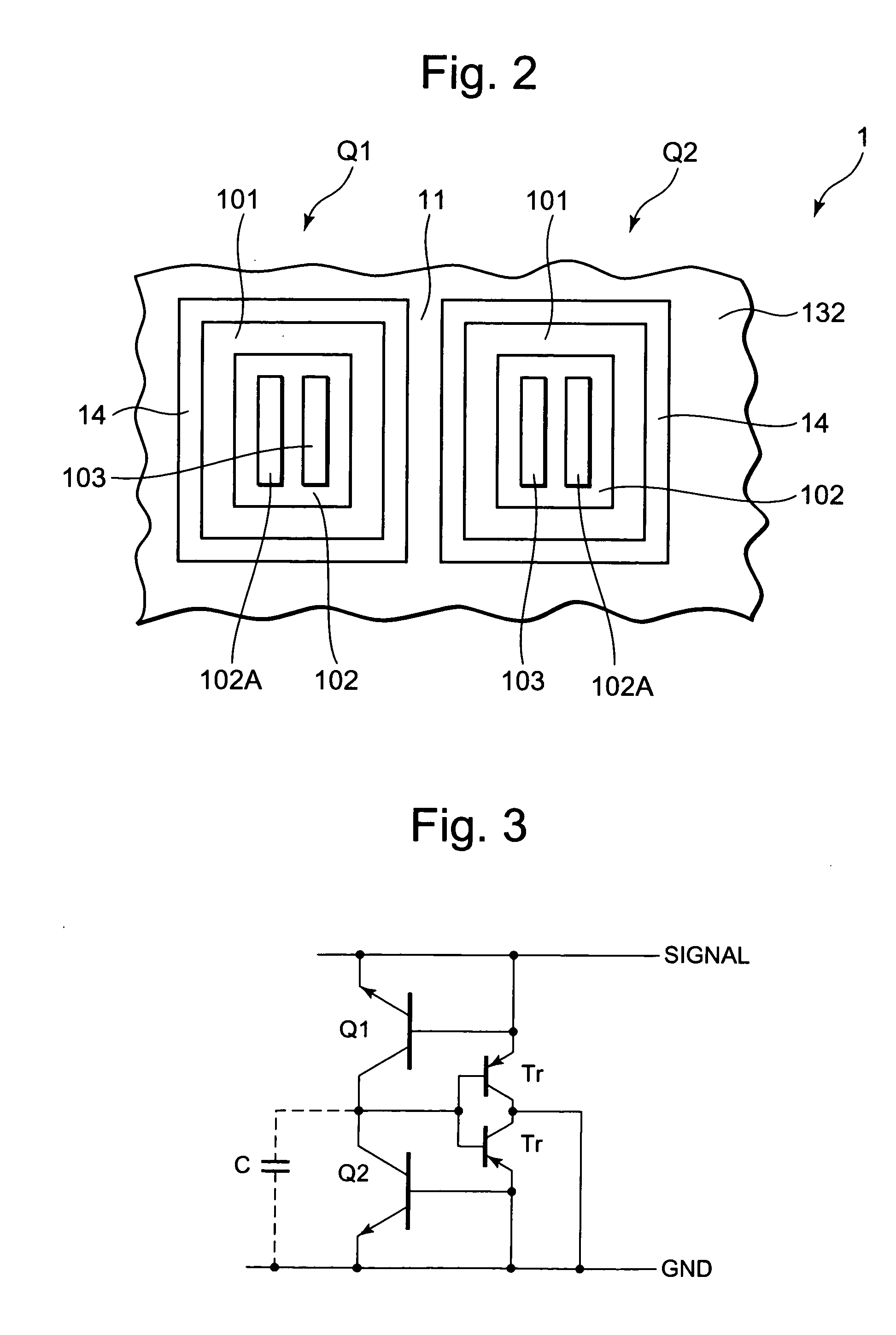Semiconductor device having two bipolar transistors constituting electrostatic protective element
a technology of bipolar transistors and semiconductors, applied in semiconductor devices, semiconductor/solid-state device details, electrical apparatus, etc., can solve problems such as affecting the internal circuit of objects, and achieve the effect of suppressing the tolerance from lowering and preventing malfunction
- Summary
- Abstract
- Description
- Claims
- Application Information
AI Technical Summary
Benefits of technology
Problems solved by technology
Method used
Image
Examples
first exemplary embodiment
[0038]FIGS. 1 and 2 show a first exemplary embodiment of the present invention.
[0039]The semiconductor device 1 in this first embodiment includes a first conductive type semiconductor substrate 13 having a pair of transistors Q1 and Q2 formed therein.
[0040]Each of the transistors Q1 and Q2 includes a second conductive type collector region 101, a first conductive type base region 102 formed in this collector region 101, and a second conductive type emitter region 103 formed in the base region 102. The first and second conductive types are opposite to each other in conductivity.
[0041]The collector regions of the transistors Q1 and Q2 are disposed separately from each other and a first conductive type first region 11 is formed between those collector regions of the transistors Q1 and Q2.
[0042]The lower portions of the collector regions of the transistors Q1 and Q2 reach a second conductive type buried layer 12 formed in the semiconductor substrate 13 and those collector regions 101 ar...
second exemplary embodiment
[0080]Next, there will be described the second exemplary embodiment of the present invention with reference to FIG. 4.
[0081]In the first exemplary embodiment, the first region 11 is connected to a P type region of the epitaxial layer 132 and configured unitarily with the P type region.
[0082]On the other hand, in case of the semiconductor device 2 in this second exemplary embodiment, as shown in the top view of FIG. 4, the first region 11 is surrounded by the collector pull-out region 14 and the second region 21. Furthermore, the first region 11 is separated from the P type region of the epitaxial layer 132.
[0083]More concretely, the second region 21 is in contact with a portion of the periphery of the first region 11, which is not in contact with the collector pull-out region 14. Concretely, the second region 21 is provided along two sides of the first region 11 that are facing each other.
[0084]This second region 21 is an N+ layer and its bottom reaches the buried layer 12 and is co...
PUM
 Login to View More
Login to View More Abstract
Description
Claims
Application Information
 Login to View More
Login to View More - R&D
- Intellectual Property
- Life Sciences
- Materials
- Tech Scout
- Unparalleled Data Quality
- Higher Quality Content
- 60% Fewer Hallucinations
Browse by: Latest US Patents, China's latest patents, Technical Efficacy Thesaurus, Application Domain, Technology Topic, Popular Technical Reports.
© 2025 PatSnap. All rights reserved.Legal|Privacy policy|Modern Slavery Act Transparency Statement|Sitemap|About US| Contact US: help@patsnap.com



